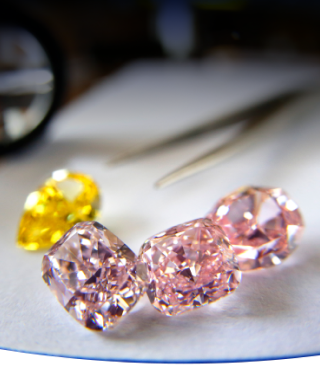Christie’s upcoming Magnificent Jewels auction on December 10th in New York will feature a 21.30 ct, oval-shaped, Fancy Light Pink, VS1, antique-cut Golconda diamond ring. The stone is described as ‘outstandingly pink and of superior quality’, with a high estimate of $280,000 price per carat.
Golconda diamonds are eponymously named after their source, the Golconda Fort: an ancient fortress city located in modern-day Hyderabad, India, that controlled the historic Kollur mine situated nearby. At the height of its power, Golconda acquired a fabled and mysterious aura that added to the allure of diamonds from that area.
Active from the 16th-mid-19th centuries, the Kollur mine was one of the most abundant diamond mines in the world, employing over 60,000 people at the height of its production[2. Scalisi, Philip (1992). The Diamonds of India. Bridgewater Review, 10(1), 3-7.]. Several world-renowned diamonds hail from the Kollur mine, such as the Dresden Green Diamond, the Koh-i Nūr (in the British Crown Jewels) and perhaps most notably, the Hope Diamond.
Known for its Type IIa diamonds – which are chemically pure and almost entirely free of nitrogen, allowing for incomparable optical transparency – the Kollur mine produced stones so clear in color, they are said to bear a resemblance to flowing water or ice[3. Victoria Gomelsky, “The Market for Golconda Diamonds Has Mushroomed,” www.nytimes.com, (March 20, 2011).]. The presence of nitrogen in a diamond’s composition can cause a yellowish tinge in the color, which is commonly seen in colorless stones. Only 1-2% of all diamonds are classified as Type IIa, distinguishing Golcondas from the majority of diamonds in the market[4. Anthony DeMarco, “Gem-Quality White Diamonds Created in Laboratory,” www.forbes.com, (March 14, 2012).].
Though the Golconda mines have closed, Type IIa diamonds can still be found in diamond-producing regions all over the world. Type IIa diamonds are not exclusive to Golconda and that name does not always signify a high-quality stone.
Pink diamonds derive their color from an atomic-level lattice defect that selectively absorbs light and produces a pink hue, though there is still much debate about their true origin of color. Because of the extreme pressure placed on pink diamonds throughout their formation, they are typically very included and as a result receive low clarity grades – this Golconda Fancy Light Pink diamond ring is a VS1, which makes the stone even more rare.
Due to their ever-increasing popularity, pink diamonds have appreciated by as much as 360.3% in the last decade with an annual growth rate of 18.5%, according to the Fancy Color Diamond Index.
Image source: Christie’s Images Ltd., 2014


